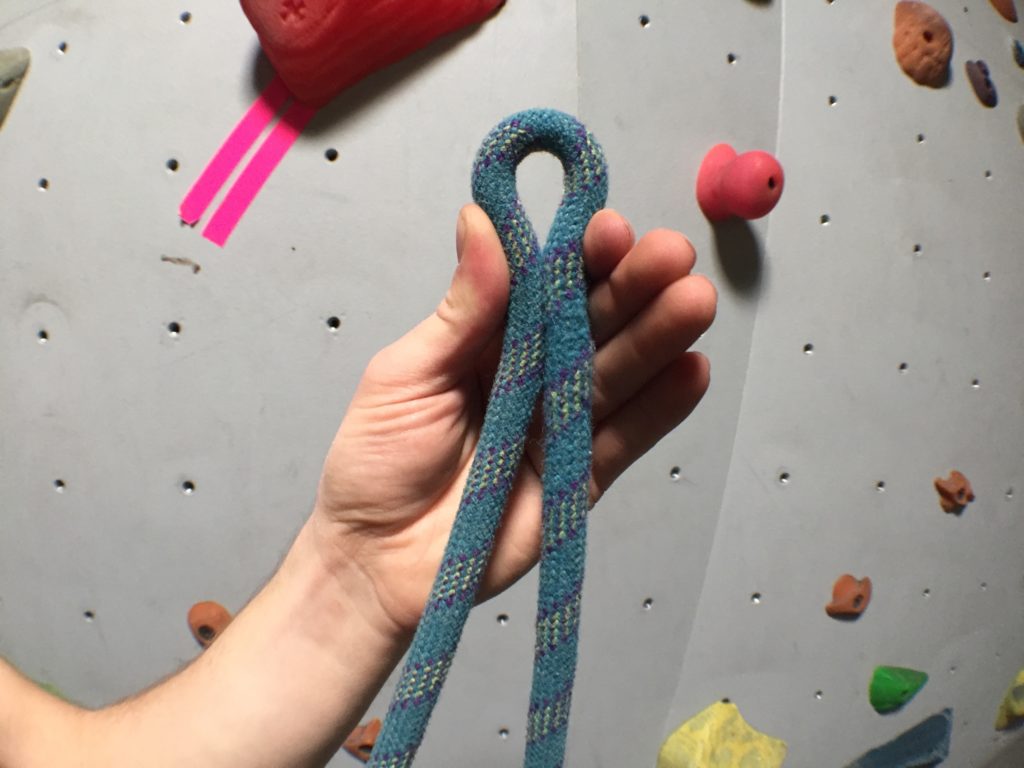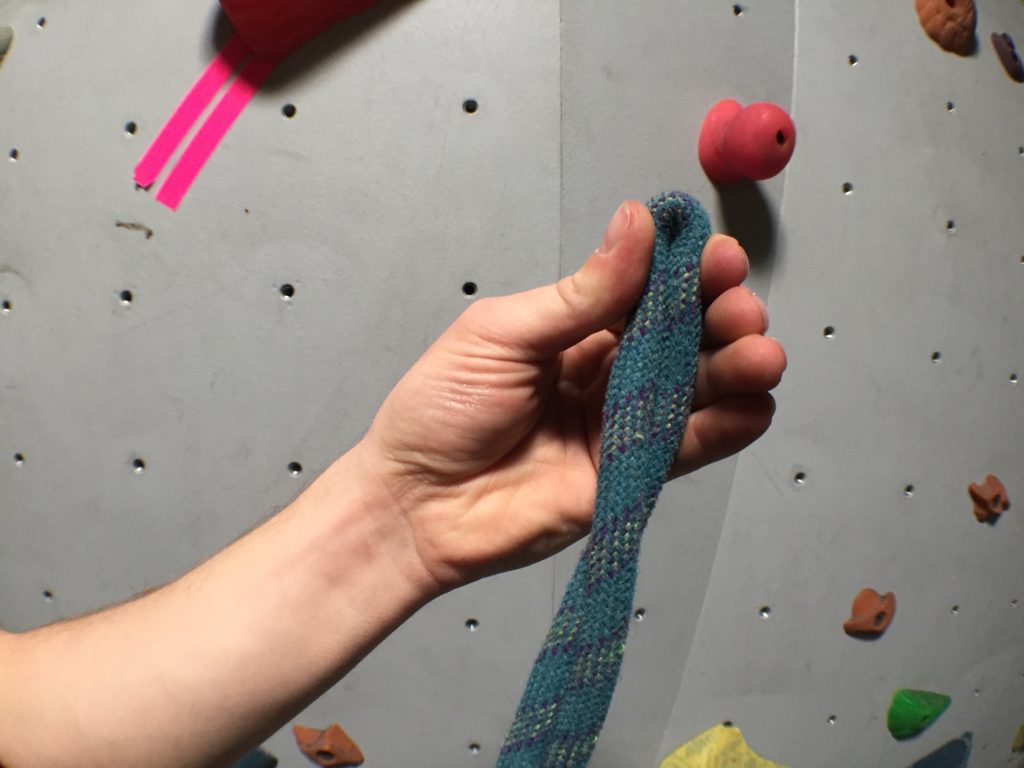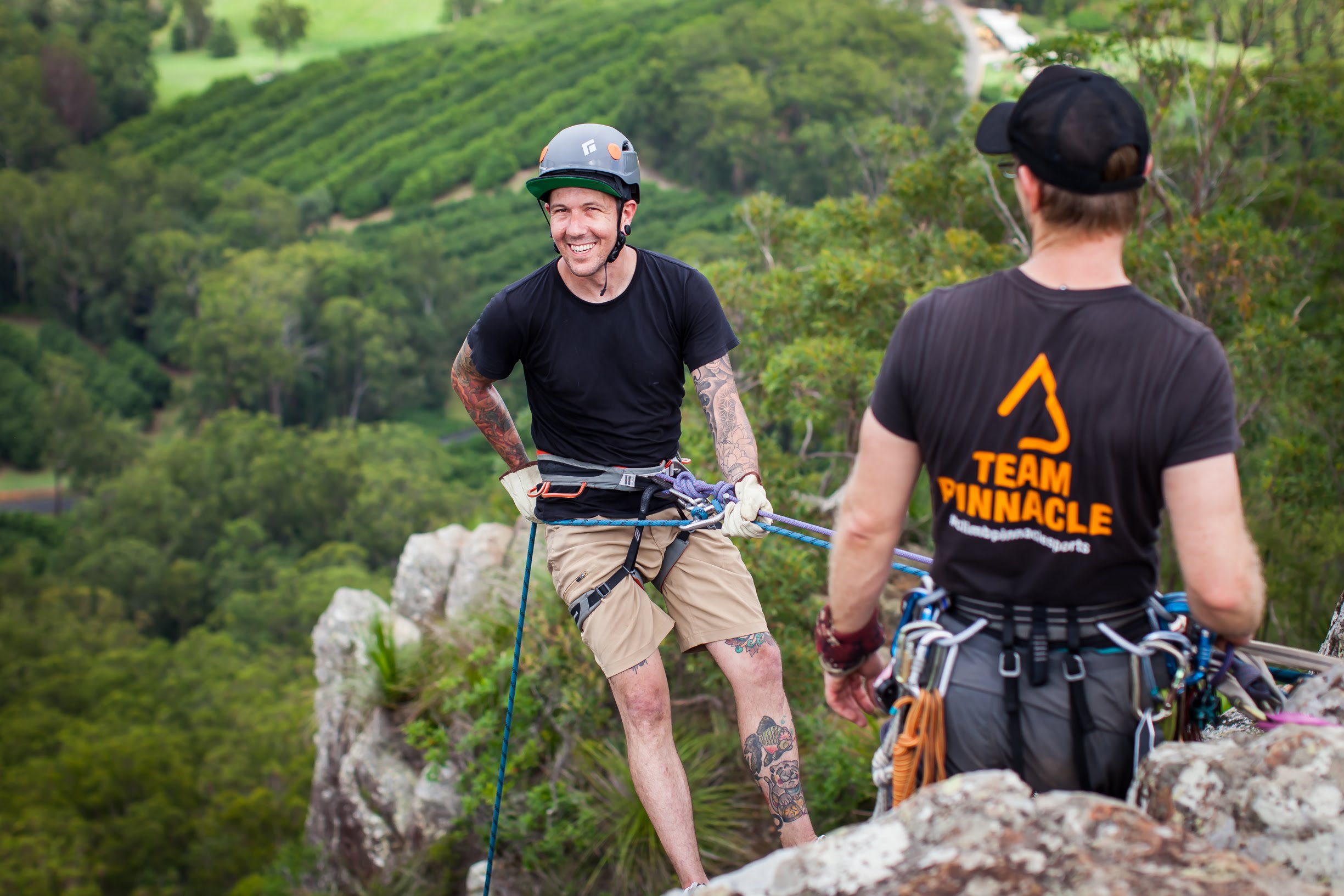Written by Pinnacle Ambassador Ryan Siacci
Rope Care 101
During my latest visit to the Pinnacle Sports store, I happened to meet a proud new Rope-Dad with his brand new Rope-Baby. It was smooth and shiny and neatly coiled, and he gazed upon it with adoration.
But he was also somewhat concerned, because he wasn’t quite sure how to care for his bundle of joy. Ropes, you see, don’t come with instruction manuals. Well, they do, actually, but these mostly consist of arcane symbols and puzzling Germanic words such as “kernmantle” and “abseil” and “halbmastwurfsicherung”.
To help Rope-Dad out, I committed to writing a short guide on rope care. I present it here, and in English too.
Stats and Rope Logs
Every climbing rope has been UIAA tested and meets required standards, however every rope has different characteristics. Important data such as diameter, number of falls, dynamic elongation (and so on) can be found on an information card within the packaging. It’s worth nerding out on this stuff a little bit, and it’s equally worth starting a rope log when you purchase new ropes. A simple excel spreadsheet will help you track the aforementioned data, as well as the number of years your rope has been in service and the amount of sick whippers it has sustained.
Click here for a more detailed look at rope characteristics and nutritional information: https://zenandtheartofclimbing.com/climbing-rope-characteristics/
Uncoiling
Many ropes come from the factory spooled straight off the barrel and will develop kinks and twists if not uncoiled correctly. Paige Claassen shows us how to avoid such horrors in this video: https://www.youtube.com/watch?v=s9ey8_fZpWI. Some new ropes are coming lap coiled by the manufacturer, which means you don’t have to worry about a thing. Bliss!
Storage
Perhaps the best thing you can do for your rope is find it a nice, dry, cool place to live when it’s not climbing the gnar. At the risk of stating the obvious, keep it away from chemicals, solvents, battery acid, urine, or basically anything else that you wouldn’t want to drink. The presence of such contaminants means that car boots can be pretty dangerous areas for ropes, and they can get damn hot as well. Whilst at the crag, a rope bag or big old tarp is a handy investment to keep dirt off your rope.
Edge Protection
Ropes don’t like sharp edges very much, so use rope protection if applicable. This is particularly important in top roping and abseil scenarios, but be mindful of flakes, lips and ledges while leading. Try to avoid the pendulum effect, particularly when abseiling, as this can cause severe damage on an isolated segment and compromise the whole rope.
Safety Checks
Sheath damage isn’t necessarily a big drama, but it can alert you to the presence of core damage, which is definitely bad juju. If you observe new sheath damage, you can check the integrity of the core with a simple pinch test. Pinch a small bight of rope between the thumb and forefinger – if a small gap remains, it’s ok, but if the rope collapses on itself, the core is compromised. This segment of rope either needs to be isolated or cut out. This test can be conducted before, during or after a climb if new damage is observed, but I like to give every inch of my rope a thorough test periodically or after long, rugged multipitch routes.


Swapping ends
The last couple of metres of your rope will see the most wear, as this is where you repeatedly tie in and weight the rope. If you regularly swap ends, it will help even out the wear, and if you need to cut these worn segments off your rope, it will keep that middle marker in the middle!
Washing
A clean rope is a good rope, but unless it never leaves the gym, your rope will definitely get dirty eventually. Head to your local climbing shop and avail yourself of some rope wash - a large bottle will last you for all eternity. Then throw it in a big tub and go to town.
Retirement
When should you retire a rope? When you don’t trust it any more, or preferably sooner. When this occurs will depend on the brand and model of rope, the mileage, and the specific incidents which have occurred to your rope (abrasions, falls, meteorite impacts etc.) Most manufacturers state a shelf life of 10 years, but that’s exactly what it sounds like – life on a shelf. If you actually use your rope for climbing, it will be significantly shorter than that. My ropes see somewhat regular use (e.g. at least once a week, every week, but often quite a lot more) and I tend to get 3-4 years from a single rope and 1.5-2 years out of half ropes. Your mileage will vary. At the risk of stating the obvious, any rope that you consider suspicious or unsafe (e.g. core shots, chemical spills etc) should be immediately retired. Your life is always worth more than the cost of a new rope.
Remember, folks – climbing is dangerous! The above information should not be considered a definitive work, but rather an overview. Mistakes and omissions are possible, and the use of the information contained in this document does not imply responsibility to the author for death, injury or harm that may result. Always refer to the manufacturer’s instructions and consult a professional climbing guide for guidance.
Looking for more great reads? Subscribe to our newsletter to stay up to date with the latest climbing tech, crag recommendations and upcoming events.








